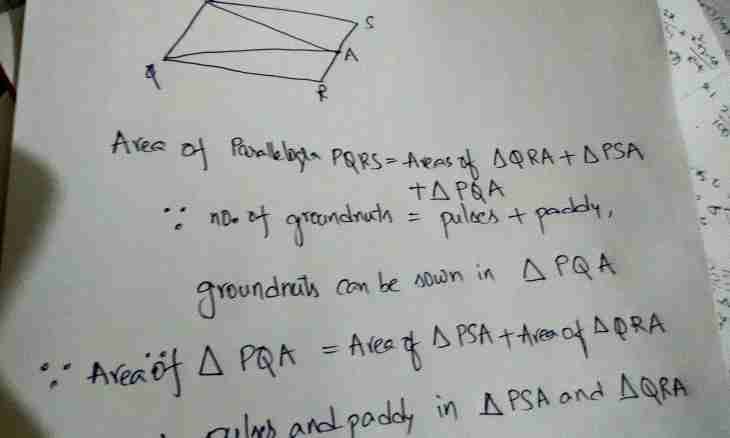In a quadrangle of tops opposite each other the creation of its diagonals is result of connection. There is a general formula connecting lengths of these pieces with another dimensions of a figure. On it, in particular, it is possible to find parallelogram diagonal length.
Instruction
1. Construct a parallelogram, having chosen if necessary scale so that all known measurements as much as possible corresponded to initial data. Good understanding of statements of the problem and creation of the evident schedule – guarantee of speed of the decision. Remember that are in pairs parallel and equal in this figure of the party.
2. Carry out both diagonals, having connected opposite tops. These pieces have several properties: they are crossed in the middle of the lengths, and any of them divides a figure into two symmetrically identical triangles. Lengths of diagonals of a parallelogram are connected by a formula of the sum of squares: d1² + d2² = 2 • (and² + b²), where and both b – length and width.
3. It is obvious that to know only lengths of the main measurements of a parallelogram insufficiently to calculate at least one diagonal. Let's consider a task in which the parties of a figure are set: and = 5 and b = 9. It is also known that one of diagonals is more another twice.
4. Work out two equations with two unknown: d1 = 2•d2d1² + d2² = 2 • (and² + b²) = 212.
5. Substitute d1 from the first equation in the second: 5 · d2² = 212 → d2 ≈ 6.5; Find length of the first diagonal: d1 = 13.
6. Special cases of a parallelogram are the rectangle, a square and a rhombus. Diagonals of the first two figures represent equal pieces, therefore, the formula can be rewritten in simpler look: 2 · d² = 2 • (and² + b²) → d = √ (and² + b²), where and both b – length and width of a rectangle; 2 · d² = 2•2 • and² → d = √2 • and², where and – the party of a square.
7. Lengths of diagonals of a rhombus are not equal sizes, however its parties are equal. Proceeding from it, the formula can be simplified too: d1² + d2² = 4 • and².
8. These three formulas can be brought also out of separate consideration of triangles into which figures are divided diagonals. They rectangular, so it is possible to apply Pythagorean theorem. Diagonals are hypotenuses, legs – the parties of quadrangles.
